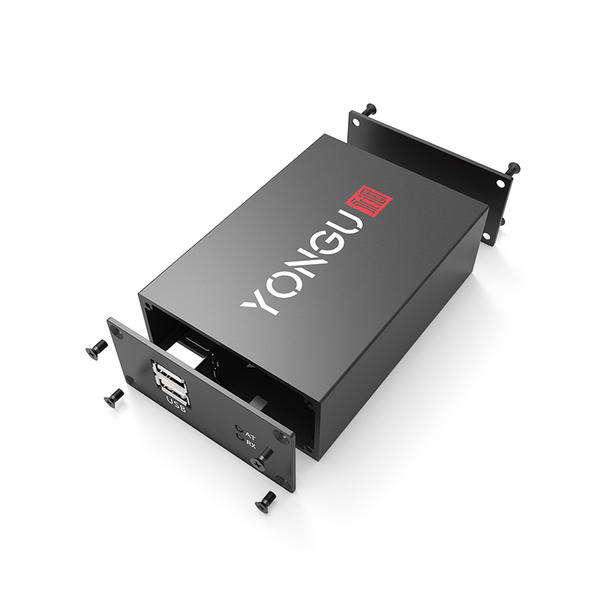Industrial communication boxes, often referred to as enclosures or cabinets, play a crucial role in housing and protecting communication equipment in various industrial settings. These boxes are indispensable for ensuring the smooth operation of critical systems in sectors such as telecommunications, manufacturing, transportation, and more.
Features of Industrial Communication Boxes
Durability and Material Composition
Industrial communication boxes are engineered to withstand harsh environmental conditions and provide robust protection to sensitive electronic equipment. Constructed from high-quality materials such as aluminum, stainless steel, or polycarbonate, these enclosures offer durability and longevity, ensuring the safety of valuable communication components.
Design Flexibility
One of the key features of industrial communication boxes is their design flexibility. Manufacturers offer a range of customization options, allowing users to tailor the enclosure according to their specific requirements. From size and shape to mounting options and additional features like ventilation, cable management, and access control, industrial communication boxes can be adapted to suit diverse industrial applications.
Compatibility with Communication Equipment
Industrial communication boxes are designed to accommodate a wide range of communication equipment, including routers, switches, modems, and servers. With standardized mounting systems and internal configurations, these enclosures provide a secure and organized environment for housing critical networking infrastructure. Whether deployed in telecommunications facilities, manufacturing plants, or transportation hubs, industrial communication boxes ensure the reliable operation of essential communication systems.
Applications of Industrial Communication Boxes
Telecommunications
In the telecommunications industry, industrial communication boxes are deployed in central offices, data centers, and cell towers to house networking equipment and facilitate seamless connectivity. These enclosures protect sensitive electronics from dust, moisture, and physical damage, ensuring uninterrupted communication services for end-users.
Industrial Automation
In industrial automation and control systems, industrial communication boxes serve as the backbone for connecting sensors, actuators, and control devices. By providing a centralized enclosure for housing PLCs (Programmable Logic Controllers), HMI (Human-Machine Interface) panels, and other automation components, these boxes enable efficient monitoring and control of manufacturing processes.
Transportation and Logistics
In transportation and logistics applications, industrial communication boxes are utilized in railroads, airports, seaports, and warehouses to support various communication and surveillance systems. From traffic management and passenger information to cargo tracking and security monitoring, these enclosures play a vital role in ensuring the safe and efficient operation of transportation infrastructure.
Advantages of Industrial Communication Boxes
Protection and Security
Industrial communication boxes offer unparalleled protection and security for critical communication equipment. With features like tamper-resistant locks, IP-rated enclosures, and EMI shielding, these enclosures safeguard sensitive electronics from environmental hazards, unauthorized access, and electromagnetic interference.
Efficient Equipment Integration
By providing a centralized housing for communication equipment, industrial communication boxes streamline equipment integration and maintenance processes. With standardized mounting options and internal layouts, these enclosures simplify installation, troubleshooting, and upgrades, reducing downtime and operational costs for industrial facilities.
Enhanced Connectivity
Industrial communication boxes play a crucial role in enhancing connectivity and data transmission capabilities across industrial networks. With integrated cable management systems, port labeling, and access points for external connections, these enclosures facilitate seamless communication between devices, ensuring optimal performance and reliability in industrial environments.
Future Trends in Industrial Communication Boxes
Integration of IoT Technology
The future of industrial communication boxes lies in the integration of IoT (Internet of Things) technology, enabling advanced monitoring, analytics, and control capabilities. By incorporating IoT sensors, wireless connectivity, and cloud-based platforms, future enclosures will empower industrial facilities to collect real-time data, optimize processes, and improve operational efficiency.
Advances in Material Science
Advances in material science will continue to drive innovation in industrial communication box design, with emphasis on lightweight yet durable materials, eco-friendly manufacturing processes, and enhanced thermal management solutions. From advanced composites to recyclable plastics, future enclosures will offer improved performance, sustainability, and cost-effectiveness for industrial applications.
Sustainable Design Practices
As sustainability becomes a key priority for industries worldwide, industrial communication box manufacturers will increasingly focus on eco-friendly design practices. This includes the use of recycled materials, energy-efficient components, and modular construction techniques to minimize environmental impact and promote resource conservation throughout the product lifecycle.
Conclusion
Industrial communication boxes play a vital role in ensuring the reliability, security, and efficiency of communication systems across various industries. With their durable construction, customizable features, and compatibility with a wide range of equipment, these enclosures are indispensable for modern industrial connectivity. As technology advances and industry requirements evolve, the future of industrial communication boxes holds promise for greater connectivity, sustainability, and innovation in the field of industrial communications.




